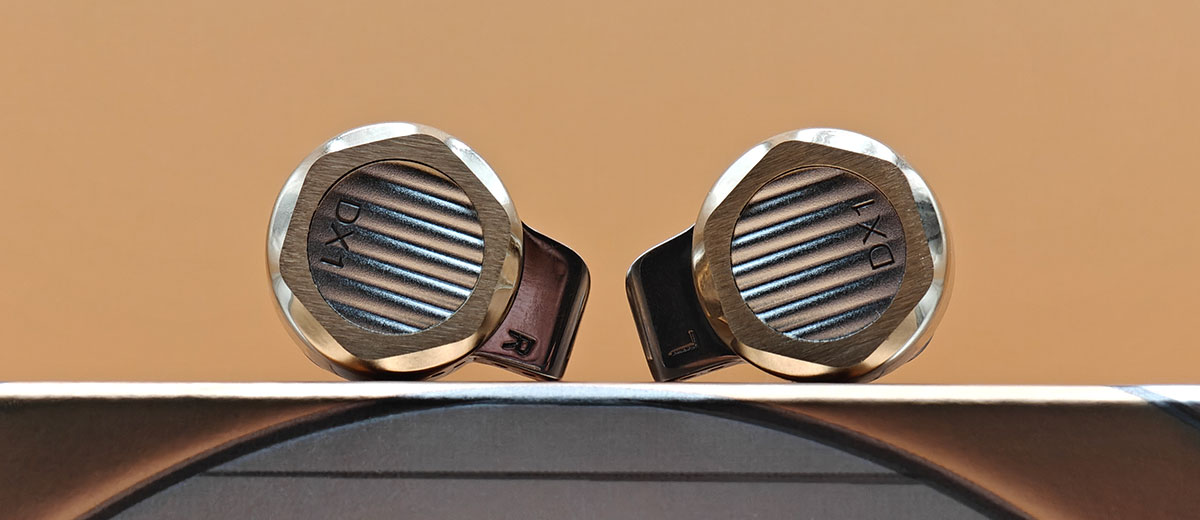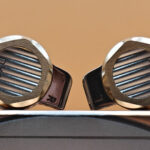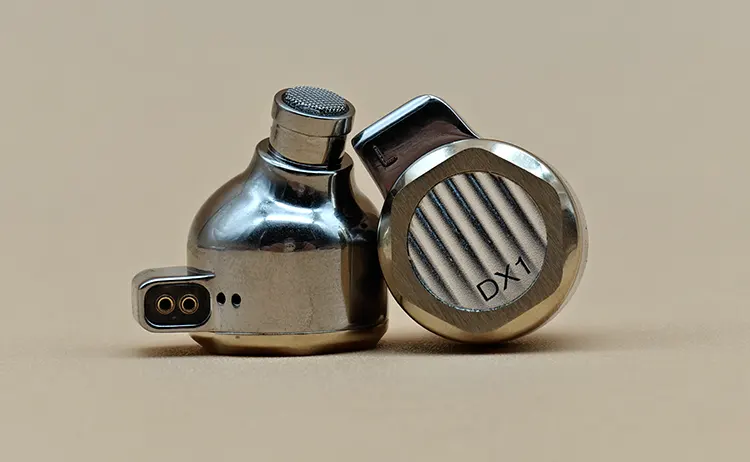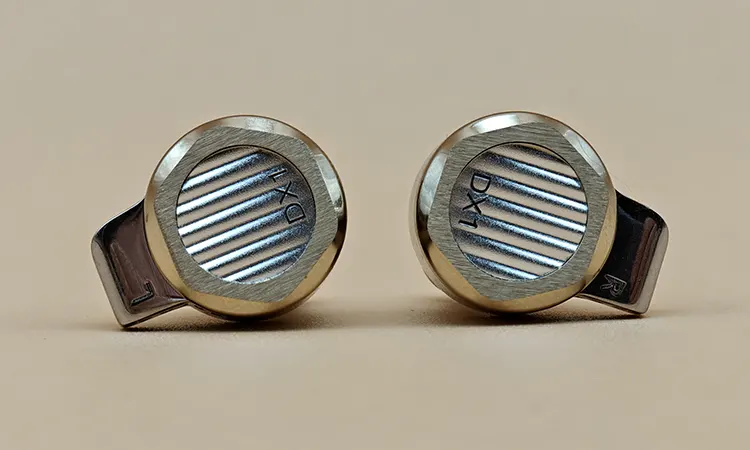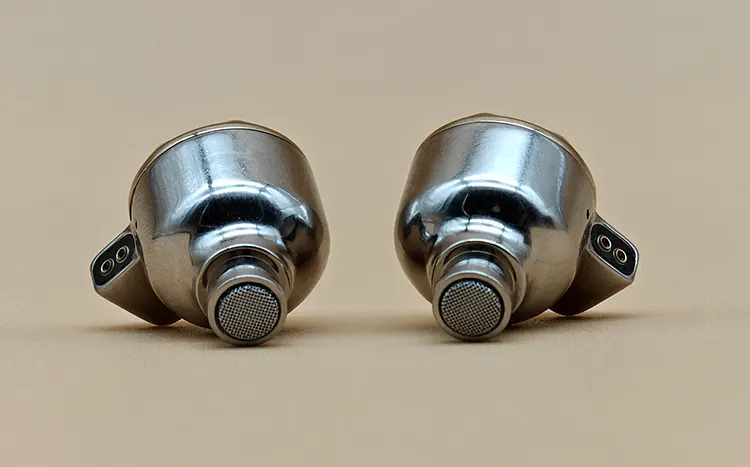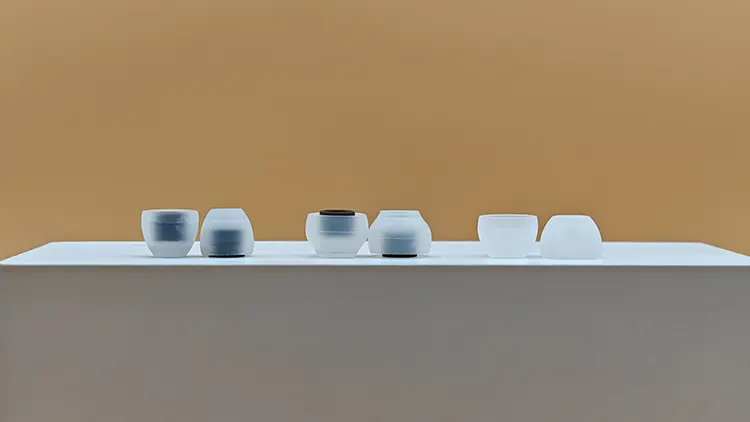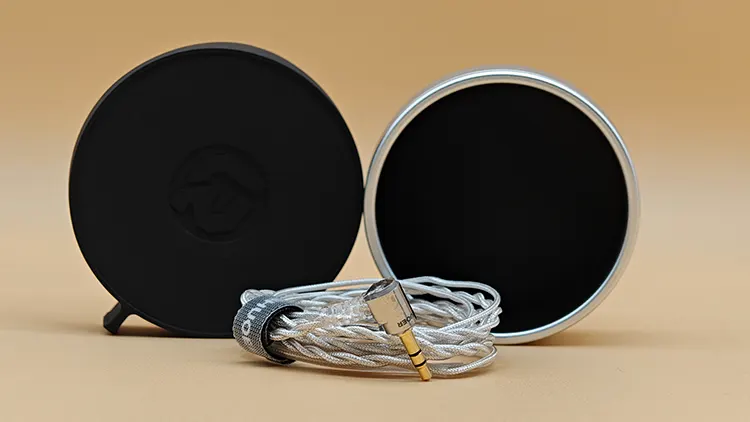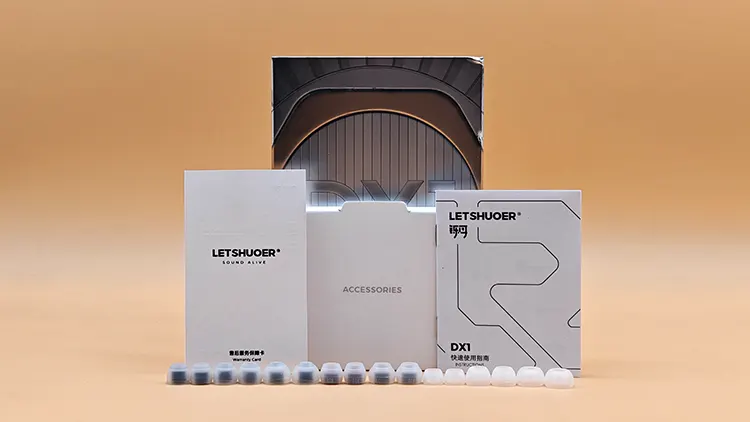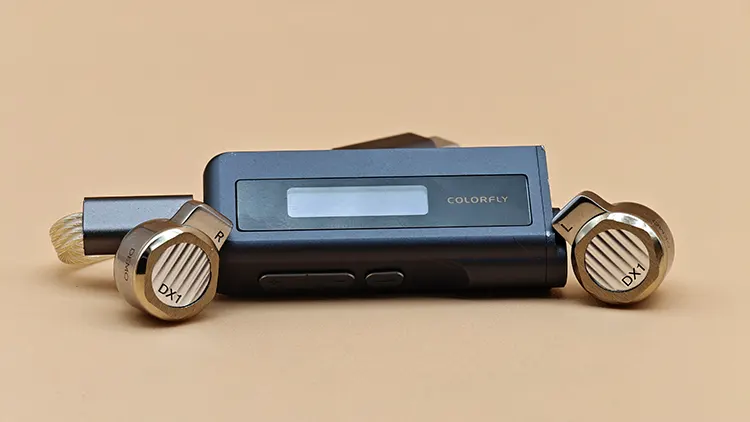In this feature, Kurt reviews the LETSHUOER DX1, a single self-developed 11mm dynamic driver universal IEM with a built-in 5 kHz notch filter. It is currently priced at $159.
Disclaimer: This sample was sent to me in exchange for my honest opinion. Headfonics is an independent website with no affiliate links or status. I thank LETSHUOER for their support.
Click here to read more about LETSHUOER products previously tested on Headfonics.
This article follows our latest scoring guidelines, which you can read in more detail here.
LETSHUOER has steadily gained recognition across the audio community through a wide range of IEM releases.
The brand has maintained a consistent presence across various price brackets, from entry-level sets such as the S08 to higher-end offerings such as the recent Mystic 8 and the flagship Cadenza 12.
Their newest model, the LETSHUOER DX1, continues the D-series lineup, focusing on a single dynamic driver configuration.
With a newly developed in-house 11mm aluminum-magnesium driver inside, can the DX1 hold its ground in today’s increasingly competitive market?
Features
The LETSHUOER DX1 features an in-house developed 11mm dynamic driver built with an aluminum-magnesium alloy diaphragm coated with nanoparticle material.
This combination enhances stiffness while keeping mass low, improving responsiveness and reducing diaphragm deformation during movement.
At the surface of the diaphragm is a diamond-patterned topology structure designed to manage resonance and control modal breakup.
This geometric shaping helps stabilize diaphragm behavior under load, allowing more consistent energy transfer across the frequency range.
The driver assembly is mounted inside a CNC-machined structure with precisely cut components for consistent acoustic alignment. LETSHUOER’s coaxial fixture approach ensures that diaphragm travel remains symmetrical, minimizing distortion from uneven stroke mechanics.
A fixed acoustic filter is embedded into the nozzle path, designed to target and attenuate resonance at around 5 kHz.
Together with internal airflow vents, this configuration helps smooth out upper midrange energy while maintaining pressure control within the chamber.
Design
The LETSHUOER DX1’s faceplate looks like the head of a bolt, with cut edges that resemble a metal fastener and a brushed silver finish in the center. A smooth champagne-colored ring wraps around it evenly, giving the faceplate a clean and mechanical appearance.
The shell is fully made of stainless steel with a mirror-polished surface that reflects light evenly across its curves. It has a smooth, rounded profile that tapers naturally into the nozzle, forming a compact and continuous teardrop-like shape.
Both shells have a clear “L” or “R” marking printed directly on the flat face of the 0.78mm connector block. On the outer side of the shell, “DEMO” is printed in all caps near the bottom edge, though a retail unit would typically have the serial number in that same spot.
There are two small circular vents placed near the base of the 0.78mm connector on the upper part of the shell. A third vent is located closer to the base of the nozzle, sitting just before the stem begins to angle outward.
The 0.78mm 2-pin connector is set on a fully detached rectangular block that extends outward from the main body. The nozzle has a straight bore with a prominent metal mesh filter that protrudes slightly past the nozzle’s edge, and a shallow lip helps hold tips in place.
Comfort & Isolation
The LETSHUOER DX1 has a very compact build with a rounded body that takes after bullet-style IEMs. Its small size allows it to sit naturally in the ear without pressing against the outer ear or antihelix.
Because of the smooth stainless-steel finish and curved design, it fits well regardless of ear size or shape. There are no protruding edges or sharp angles, making the shell disappear once inserted.
The smaller size does reduce sealing strength, which affects passive isolation during use. Noise from the outside still comes through more than usual, especially in louder environments.
Despite the limited seal, the low-profile design makes it easy to wear for long periods without discomfort. It’s especially comfortable for side sleeping, as the shell doesn’t stick out or shift when pressure is applied.
Ear Tips
The LETSHUOER DX1 comes with three types of silicone tips that differ more in comfort than in sound. These include a wide bore with a long brown stem, a balanced tip with a long black stem, and a wide bore with a short white stem.
The brown wide-bore tips offer a decent seal but tend to wobble slightly during regular head movement. With extended use, they can slip out and require readjustment.
The black balanced tips had the poorest seal among the three and felt less secure in the ear. Even the largest size could not provide a stable or tight fit.
The white wide-bore tips delivered the most secure and comfortable experience out of all three. Its shorter stem brings the DX1 closer to the ear, creating a better seal with no wobble during long sessions.
Stock Cable
The stock cable included with the LETSHUOER DX1 is a 256-core silver-plated monocrystalline copper cable. It has a soft, braided layout with a white cloth-like jacket that is easy to handle and lightweight in use.
The splitter is made of stainless steel with a polished finish, while the upper portion near the exit is covered in a clear transparent sleeve. The 3.5mm jack and the 0.78mm connectors also feature transparent housings that show the internal wiring and solder points.
Left and right indicators are printed on the connector housings, but the markings are extremely faint and difficult to see without direct light. Despite the subtle labeling, the connector fit is tight and holds its position well once inserted.
This is a non-modular cable, and buyers must choose between a 3.5mm or 4.4mm version at the time of purchase. While there is no swappable option, the cable design complements the DX1’s compact form and offers good build quality overall.
Packaging & Accessories
The front of the box mirrors the faceplate design of the LETSHUOER DX1. It carries the same bolt head look, with metallic ridges and cut edges extending toward the sides, while a large DX1 is embossed at the center.
Lifting the outer sleeve upward reveals a white inner box with the LETSHUOER name at the top, a line art graphic across the surface, and the logo stamped at the bottom corner. Under this lid is a layered layout that holds the IEM shells in cutouts and the accessories box beneath.
The accessories box contains three sets of ear tips in different designs, along with the instruction manual and warranty card. Below the IEM tray is a circular carrying case that looks like a Tupperware container.
The case consists of a smooth silicone lid with the LETSHUOER logo molded in the center, paired with a matching silver metal base. Inside it is the included cable, neatly coiled and secured with a fabric strap.
Sound Impressions
The following sound impressions of the LETSHUOER DX1 were completed using a mix of the Heartfield R1 and Colorfly CDA-M2 dongles.
Bass
The LETSHUOER DX1 has a subbass that delivers a light rumble with controlled weight. It doesn’t come off as overpowering and avoids drawing too much attention to itself.
Decay is slightly extended, letting the lows linger just enough to give depth and support. Despite this, it stays tight and avoids sounding muddy or slow.
The mid-bass is impactful with a satisfying punch when needed. Like the sub-bass presence, it stays moderate in level and does not overpower the rest of the tuning.
Bass guitars and kick drums carry a realistic tone with proper body and texture. Each hit or note lands with a natural sense of weight and never feels dry or flat.
Mids
The LETSHUOER DX1 has a standout vocal presentation that immediately grabs attention. Both male and female vocals come through with a rich and centered character that feels grounded and stable.
Each note has a strong weight that gives the midrange fullness without making it sound too thick. Vocals have a bold presence that’s noticeable right away but remains clean.
Timbre is highly natural across both vocals and instruments, with no odd coloration or sharpness. Guitars, pianos, and acoustic strings sound accurate and well-textured.
Despite the thicker note profile, clarity remains excellent, and layering is handled well. Subtle vocal details like breathing, pausing, and more are easy to pick up.
The entire midrange sounds balanced without any awkward forwardness or dips. There’s a clear sense of liveliness that makes it engaging while still staying smooth throughout.
Treble
The treble on the LETSHUOER DX1 is nothing special, but it does its job without drawing attention. It stays in line with the rest of the tuning and never becomes intrusive.
Cymbals and upper percussion sound soft, lacking both edge and bite. There is supposed to be a metallic zing or trailing shimmer sound, but that tone is missing and gets cut off too early.
Detail retrieval is acceptable for the price, but doesn’t stand out. It captures basic texture but misses out on finer micro-details in the upper range.
There is no sibilance, and no harsh spikes show up even on brighter recordings. Treble overall stays smooth with no signs of forced sharpness or artificial boosting.
Staging & Dynamics
Stage width stretches a bit past the ears, giving a decent sense of space left to right. However, it doesn’t go very far in depth or height, so everything feels like it stays in front of you.
Imaging is accurate when the music is simple, and it’s easy to tell where sounds are coming from. But once more instruments come in, placement becomes harder to follow.
Separation also drops off during busy songs, where different sounds start to blend. Layering isn’t very strong, and instruments can end up overlapping too much.
What stands out is how the DX1 handles changes in volume and intensity. Vocals always stay clear and full, whether the music is quiet or loud.
Click on page 2 below for my recommended pairings and selected comparisons.

